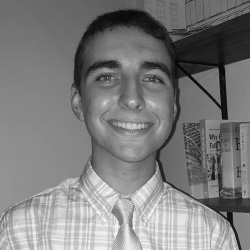News
Experts Offer Career Advice, Insights on Technology
December 6, 2021
As companies and organizations increasingly embrace new digital paths to add efficiency and relevancy to their processes, students and new graduates can leverage their more advanced knowledge of and skills in technology to enhance their career opportunities, no matter which path they choose to pursue.
New York Tech’s recent forum, “Discover Surprising Career Paths in Today’s Digital World,” focused on this trend and featured guest speakers, who discussed how technology is used in their specific fields and offered some basic career advice: Judy Murrah, chief operating officer for Applied DNA Sciences; Randy Stout, Ph.D., assistant professor and director of the College of Osteopathic Medicine (NYITCOM) Center for Biomedical Innovation; Marcella Del Signore, associate professor and director of the M.S. in Architecture, Urban and Regional Design at the School of Architecture and Design; and Edie Weiner, president and chief executive officer of The Future Hunters.
Murrah opened her remarks by telling attendees that the best way to drive their career aspirations is to determine “what our passion in life is and the purpose we like to share.” She used a two-circle Venn diagram to show how technology impacts every industry. In one illustration, she showcased industrial engineering and information technology as careers of interest and identified overlapping technology-related characteristics of both disciplines, such as process efficiency, machines and software, project management, and quantitative analysis. Murrah then identified some career pathways with those traits, including networking, communications, and cybersecurity. “Think about skills and not jobs because the jobs that might be available when you graduate may not even exist yet. Try new things so that you can be the best you can be and lead with your passion,” Murrah concluded.
Stout described the priority of the NYITCOM Center for Biomedical Innovation (CBI) as providing access to exploratory and novel technology for students and faculty at the medical school. Virtual reality, for example, has recently become a reliable source of learning since it touches on the basic biomedical and educational research and tools to improve therapy. He said that the center has also worked on researching human injuries and diseases using robotics, image analysis, and computational simulations such as Dexter, a robotic arm that was built to interface with a turntable by CBI staff member Avery Gilson. “This [Dexter] is using different approaches—things like programming artificial intelligence by capturing a series of images and using programs that employ artificial intelligence to take these two-dimensional images and create a three-dimensional structure,” said Stout, who noted that he didn’t have the ideal background of a “tech guy.” He was raised in rural Pennsylvania, and his family was more involved in sports and the outdoors than science or technology. And, even as an undergraduate majoring in biology, he said he tended to neglect using technology. He encouraged attendees to be persistent in their pursuits, to learn to accept failure, and to relentlessly find and follow their interests.
Del Signore described how technology will increasingly be integrated into the design process in architecture and urban design. Architecture projects are rapidly advancing, taking on new and different forms. Some tools Del Signore discussed included BIM (building information modeling), which helps identify the parameters of construction on a certain project; artificial intelligence, which produces different design possibilities through gathered data; digital manufacturing, which extends the forms of building, pattern flows, and potential materials; and immersive environments (augmented reality, virtual reality, mixed reality) to present spaces in scale and show how we can operate in different scenarios.
Weiner, the final speaker, expressed her excitement about the breadth of potential careers available today by stating that there is now the capability of inventing whatever career one desires in this new digital age. She also concurred with Del Signore’s comment that “Every kind of structure that we’ve constructed in the past is then reconstituted for the future, and people that are stuck in those pasts really can’t move on the way you can into a future that is fundamentally different from anything we have seen before.” Weiner discussed how society, in general, is heavily shifting towards a technological lifestyle beyond just careers: working and learning from home, the rapid popularity of esports in contrast to sports, finding energy from anywhere, and not relying solely on fossil fuels. Her career advice? “Pick whatever you like,” Weiner concluded, “Pick whatever field you are interested in. Couple it with an understanding of the digital future, and you have a future to create for yourself, even if it never existed before. Don’t stick to one thing, don’t stick to one corner.”





